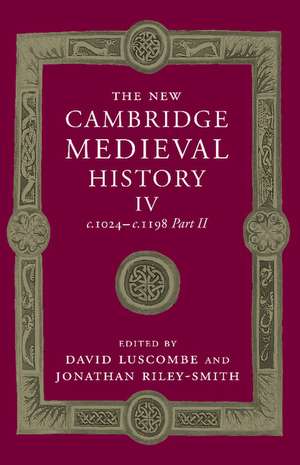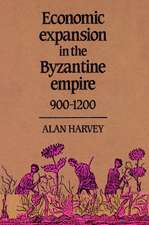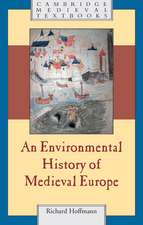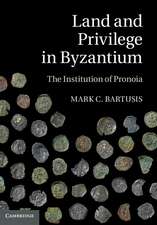The New Cambridge Medieval History: Volume 4, c.1024–c.1198, Part 2: The New Cambridge Medieval History, cartea 4
Editat de David Luscombe, Jonathan Riley-Smithen Limba Engleză Paperback – 20 mai 2015
Preț: 457.14 lei
Preț vechi: 564.36 lei
-19% Nou
87.47€ • 91.33$ • 72.40£
Carte tipărită la comandă
Livrare economică 04-18 aprilie
Specificații
ISBN-10: 1107460638
Pagini: 980
Ilustrații: colour illustrations
Dimensiuni: 152 x 229 x 49 mm
Greutate: 1.28 kg
Editura: Cambridge University Press
Colecția Cambridge University Press
Seria The New Cambridge Medieval History
Locul publicării:New York, United States
Cuprins
Preface; Introduction Jonathan Riley-Smith and David Luscombe; 2. The papacy, 1024–1122 Uta-Renate Blumenthal; 3. The western empire (including the French speaking imperial lands) under the Salians Hanna Vollrath; 4. Italy in the eleventh century (a) Northern and central Italy Giovanni Tabacco (b) Southern Italy Graham Loud; 5. The kingdom of the Franks to 1108 Constance Bouchard; 6. Spain in the eleventh century Simon Barton; 7. England and Normandy, 1042–1137 Marjorie Chibnall; 8. The Byzantine empire, 1025–1118 Michael Angold; 9. Russia, the Bulgars and the southern Slavs, 1024–c.1200 Martin Dimnik; 10. Poland in the eleventh and twelfth centuries Jerzy Wyrozumski; 11. Scandinavia in the eleventh and twelfth centuries Peter Sawyer; 12. Hungary in the eleventh and twelfth centuries Nora Berend; 13. The papacy, 1122–98 I. S. Robinson; 14. The western empire, 1125–97 Benjamin Arnold; 15. Italy in the twelfth century (a) Northern and central Italy Giovanni Tabacco (b) Norman Sicily Graham Loud; 15. Spain in the twelfth century Peter Linehan; 16. The kingdom of the Franks from Louis VI to Philip II (a) Crown and government John W. Baldwin (b) The seigneuries Michel Bur; 17. England and the Angevin dominions, 1137–1204 Thomas K. Keefe; 18. Scotland, Wales and Ireland in the twelfth century Geoffrey Barrow; 19. The Byzantine empire, 1118–1204 Paul Magdalino; 20. The Latin east, 1098–1204 Hans Mayer; 21. Abbasids, Fatimids and Seljuqs Michael Brett; 22. Zangids, Ayyubids and Seljuqs Stephen Humphreys.
Recenzii
Descriere
The fourth volume of The New Cambridge Medieval History covers the eleventh and twelfth centuries, which comprised perhaps the most dynamic period in the European middle ages. This is a history of Europe, but the continent is interpreted widely to include the Near East and North Africa. The volume is divided into two parts of which this, the second, deals with the course of events - ecclesiastical and secular - and major developments in an age marked by the transformation of the position of the papacy in a process fuelled by a radical reformation of the church, the decline of the western and eastern empires, the rise of western kingdoms and Italian elites, and the development of governmental structures, the beginnings of the recovery of Spain from the Moors and the establishment of western settlements in the eastern Mediterranean region in the wake of the crusades.



















